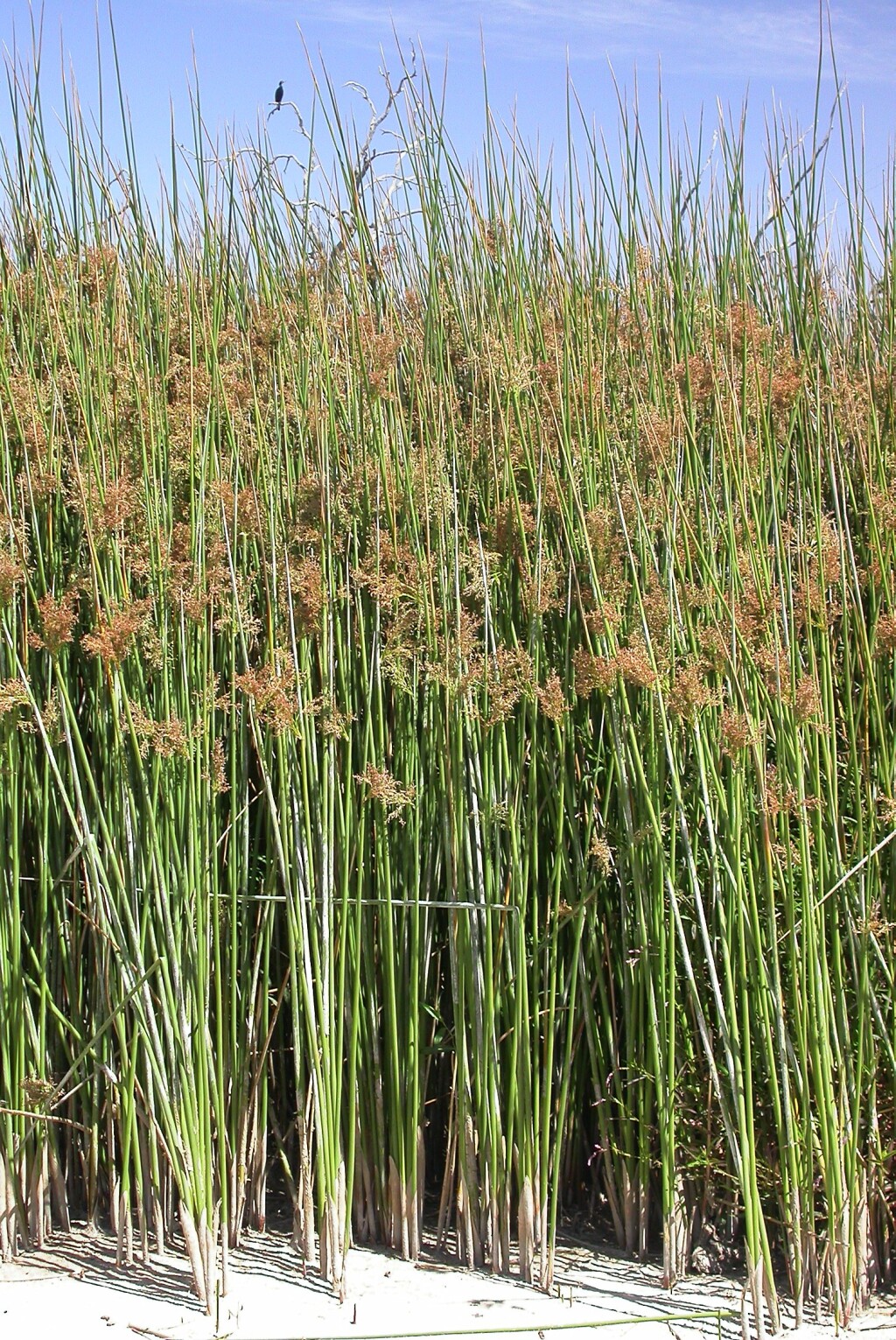Juncus ingens
N.A.Wakef. Giant RushDioecious perennial with horizontal or ascending rhizomes. Cataphylls pale to dark brown towards the base, to 40 cm or more long. Culms erect, dull green, (1.5–)2–5m high and 4–10 mm diam.; striations c. 100–200, crowded, not strongly raised; pith interrupted throughout or continuous (and dense) at base and interrupted above; stomates superficial. Inflorescence large, lax, many-flowered with flowers scattered along fine branchlets; primary bract continuous with culm, to c. 50 cm long; prophylls present. Tepals stramineous, 1.6–2.6 mm long in male flowers, 1.5–2.0 mm in female flowers; stamens 6, anthers c. 1–1.5 mm long, reduced to staminodes in female flowers. Capsules equal to or exceeding the tepals, straw colour to light brown, 1.5–2 mm long. Flowers mostly Oct.–Jan., seeds shed mostly Dec.–Apr.
Wim, VVP, VRiv, MuF, GipP, WaP, Gold, CVU, GGr, DunT, NIS, EGL, EGU, HSF, HNF. Also NSW. Usually forms extensive pure stands on heavy soils within and on the margins of lakes, billabongs and drainage channels.
Sometimes robust specimens of Juncus procerus are misdetermined as J. ingens, but the two are readily separated on sexuality, inflorescence form, and tepal, anther and capsule size. Hybrids with J. pallidus are known.
Albrecht, D.E. (1994). Juncus. In: Walsh, N.G.; Entwisle, T.J., Flora of Victoria Vol. 2, Ferns and Allied Plants, Conifers and Monocotyledons, pp. 197–233. Inkata Press, Melbourne.
 Spinning
Spinning
